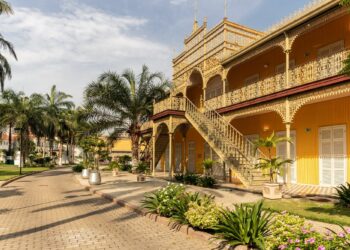ARCOlisboa 2023 will once again make the Portuguese capital a meeting point for collectors, gallery owners, artists and professionals worldwide.
Already in its sixth edition, which takes place from the 25th to the 28th of May, Cordoaria Nacional will host the artistic content of the galleries selected by the Organizing Committee and the teams of curators from the different sections.
The central axis of the event, the General Programme, will comprise national and international galleries whose artistic proposals will ratify their commitment to quality content. ARCOlisboa will also promote its two main curated sections: África em Foco (Africa in Focus), curated by Paula Nascimento and with the participation of galleries from the African continent, and, on the other hand, Opening Lisboa, curated by Chus Martínez and Luiza Teixeira de Freitas. This section will investigate new languages and artistic spaces to attract new content and investigations to the event.
ARCOlisboa 2023 opens its doors on the 25th of May, dedicating this first day only to professionals. Access to the general public will occur from the 26th to the 28th of May.
MOVART

Fidel Évora. Courtesy of the artist and MOVART.
Founded in 2015 by Janire Bilbao in Luanda and taken to a broader dimension in 2020 with the opening of a new space in Lisboa, MOVART acts as a mediator for the contemporary art produced in African countries and the African and Lusophone diaspora. Rather than addressing preconceived notions of ‘alterity’ or exoticism, MOVART aims to voice personal realities and discourses often made invisible or underrepresented by the international art scene.
Fidel Évora was born in Cidade da Praia in 1984 but grew up in Barreiro. In 2004 he finished the technical course of Image and Communication in ETIC, and in 2008 he took the Masters in Motion Graphics at BAU Escola Superior de Disseny in Barcelona. Between 2004 and 2010, he worked as a Graphic Designer. He cultivates a taste for research, preservation of artefacts, and rescue of essential memories for collective and personal identity; divided between these frontiers, he creates compositions between the real and the fictional, treading his path and creating forgotten dialogues on purpose or not. In 2011 he was featured in his first group exhibition abroad, “After the Utopia, a view on the Portuguese Freedom Day”, in Acquire Arts Gallery London, curated by Plasticina. In 2016, in the group exhibition Glocal Wozen Lisbon. In 2018, the group exhibition Alter Ego Macau. In 2020, the Schubert live performance – Winter Trip, was curated by Boca do Lobo. Since 2008, he has been part of the New York-based collective Antagonist Movement (which included, until his death, Arturo Vega, creative director Ramones). 2011 Participated in the documentary The Dolls of Lisbon by Ethan H. Minsker. 2020 Participation in the group shows N’A Gráfica – Centro de Criação Artística. 2021 Ephemeral Ethernal group show – NFT group show. 2021 Collective exhibition Linha Imaginária – MU.SA Museu de Artes de Sintra. 2021 Group exhibition “de Dentro e Fora” – Collective Exhibition of Cape Verdean Artists – UCCLA Lisbon.
THIS IS NOT A WHITE CUBE
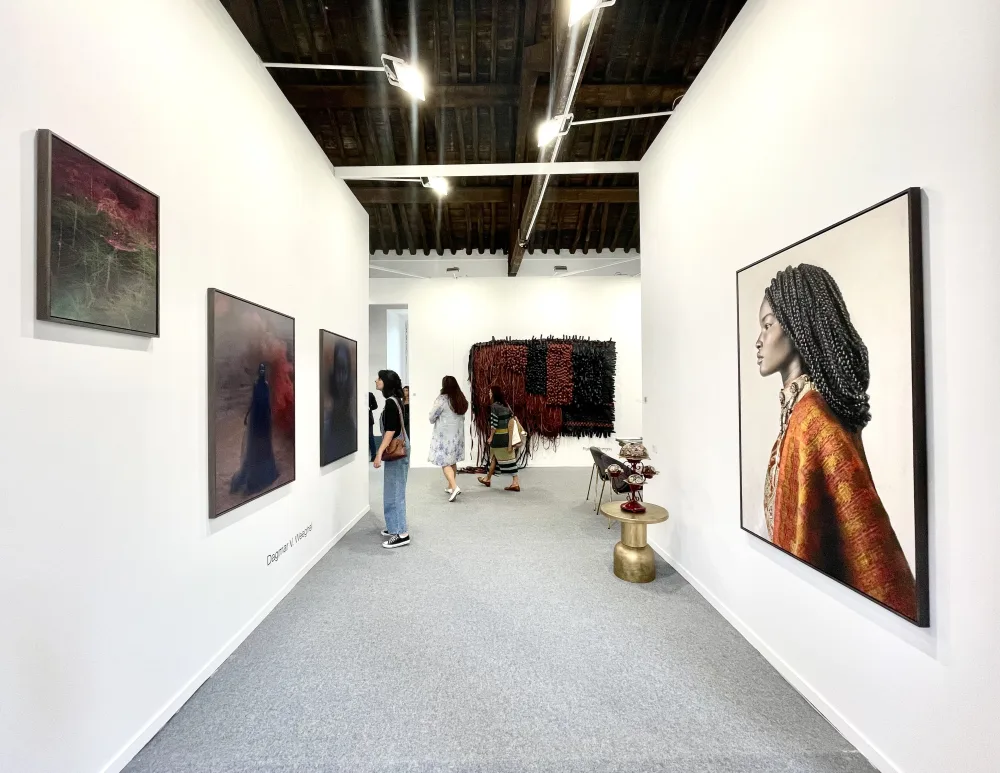
Courtesy of THIS IS NOT A WHITE CUBE.
THIS NOT A WHITE CUBE is an international contemporary art gallery with exhibition spaces in Luanda (Angola) and Lisbon (Portugal). Representing and collaborating with international established and emergent artists, the gallery’s program focuses on relevant and powerful narratives and discussions associated with the African continent and its diaspora. Despite the profound connection with Africa, it is the first contemporary African gallery in Portugal that focuses not exclusively on Lusophone circles but also the emerging aesthetics of cultural and artistic productions from the Global South. The gallery maintains a regular and significant presence in important international art fairs. The gallery will be presenting works by Manuela Pimentel, Cássio Markowski, Pedro Pires, and René Travares.
193 Gallery (Africa in Focus)
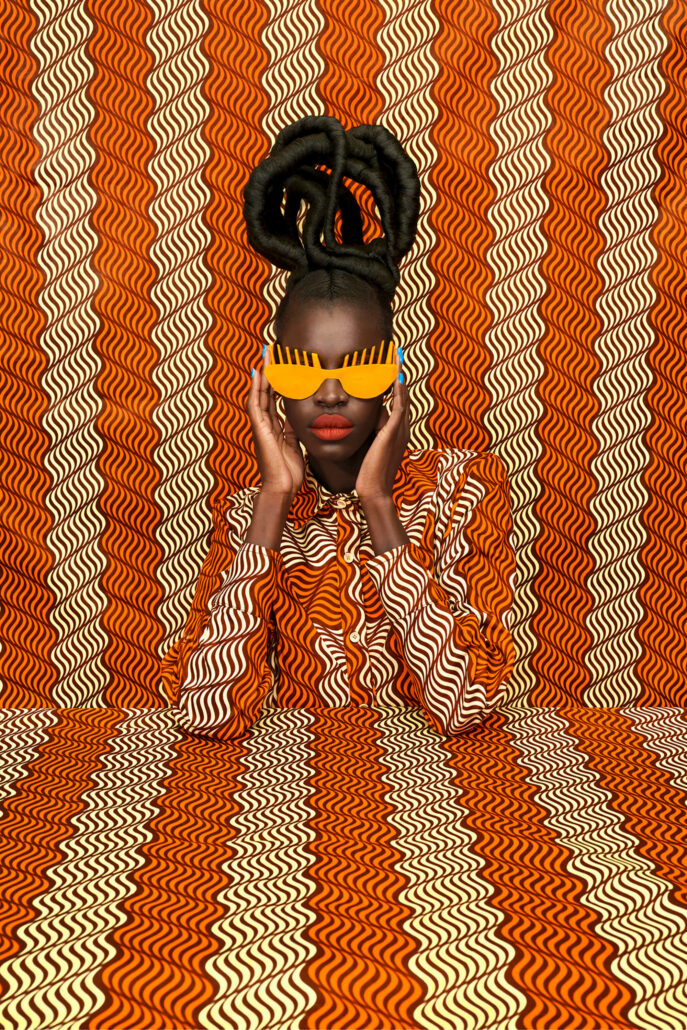
Thandiwe Muriu, Her everlasting legacy, 2022. Photography, 90 x 60cm / 150 x 100cm. Courtesy of the artist and 193 Gallery.
193 Gallery’s mission is to bring the heart, the soul and the edge from the world of contemporary art.
The gallery was born in 2018 from a passion for travelling and discovery. Through these years, their program embraced a dialogue among the different forms of contemporary art and an encounter with the biggest audience ever imagined.
Through its artistic selection and strong scenographic proposals, the gallery, located at two venues, 24 & 21 rue Béranger in Paris, celebrates colour and material, diversity and legitimacy of the world art scene.
Avoiding clichés, their team crosses borders to meet local artistic venues. Curators work on themes and select both emerging and established artists, guided by the richness of their various cultures.
The sustained growth of 193 Gallery is driven by constant evolution, enlarging a family of dedicated professionals, representing new artists, organising conferences and events, and bringing together creators, audiences and public and private institutions.
Also, to foster creativity and experimentation, 193 Gallery began a residency program in January 2023 at one of their Parisian spaces, becoming an experiential venue anchored in innovation.
Today, they are extending their international presence, participating in around fifteen prestigious fairs a year, and developing special projects, from collateral exhibitions of the prestigious Biennale de Venezia collaborations with artists crossing continents like Africa with Asia to pop-up spaces in Mexico City.
That’s why today, the 193 Gallery’s mission is to bring the heart, the soul and the edge from the world of contemporary art, and their genuine efforts go to make this possible, reaching a broad audience.
Arte de Gema (Africa in Focus)
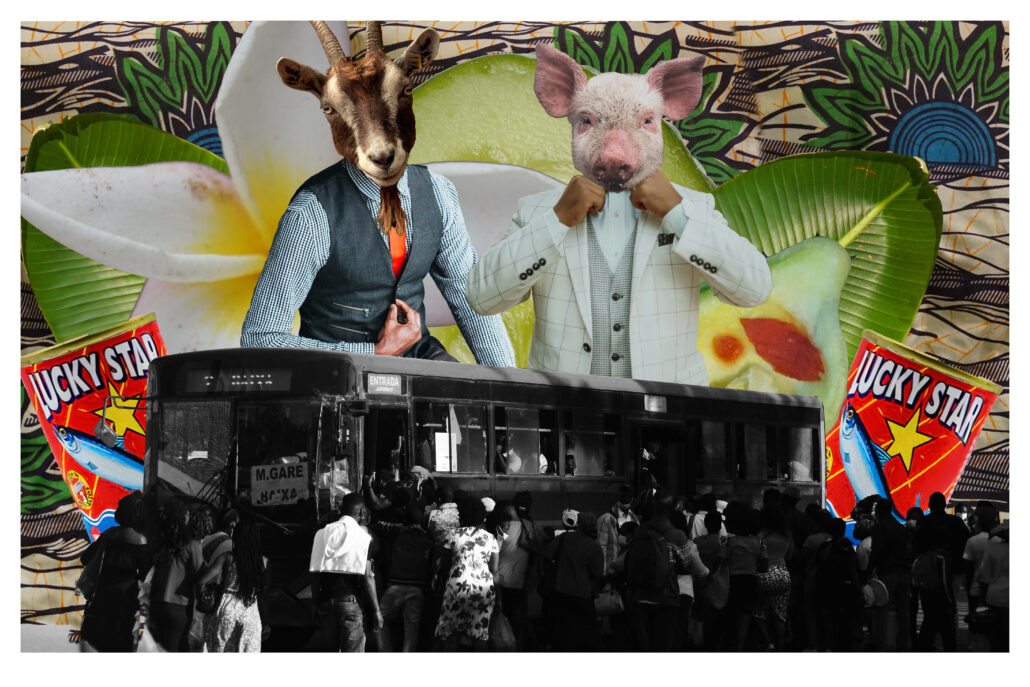
Thandi Pinto, Lucky Star, 2022. Digital photocollage – printed on 100% cotton fine art paper. Courtesy of the artist and Atre de Gema.
Established in 2016, Arte de Gema Gallery embraces the commitment to represent emerging talents and established artists with different expressive ranges. Working as a platform for promoting the expression of artistic and cultural practices of Mozambique artists and its diaspora – Arte de Gema specialises in exploring art from a local and global perspective. Through different curatorial projects, Arte de Gema is committed to presenting the modern and contemporary Mozambican master and introducing emerging artists to the international audience. The gallery has been part of some art Fairs such as 1:54 London 2017, FNB Joburg Art Fair 2018, Latitudes 2019, ARCOLisboa 2019 and 2020, African Galleries Now 2020 & 2021, FNB Arte Joburg 2021, African Gallery Now 2022, ARCOlisboa 2022, Latitudes 2023.
Ângela Ferreira was born in 1958 in Maputo, Mozambique, and lived in Cape Town, South Africa, during apartheid. She graduated in sculpture and obtained her master of fine arts (MFA) at the Michaelis School of Fine Art, University of Cape Town, South Africa. She holds a PhD from the Faculty of Fine Art, University of Lisbon, where she is now an assistant professor. She lives and works in Lisbon.
Gemuce, born in Quelimane, Mozambique, in 1963, has a degree in Fine Arts from the Higher Institute of Fine Arts in Kiev. He is a Master in Mural Painting from the Academy of Fine Arts in Ukraine and a Master in Design and Management of Cultural Projects from the University of Sorbonne Nouvelle – France.
Thandi Pinto, born in Maputo, Mozambique in 1990. A self-taught artist, she became interested in photography in 2017 when she joined the VeSó photography group. From there, she started to research and work on different approaches to her photography. Digital photo collage is where Thandi find herself.
African Arty (Africa in Focus)

Rahma Lhoussig, I will see you when I fall asleep II, 2022. Mixed-media on canvas, 150 × 130cm. Courtesy of the artist and African Arty.
African Arty is an art gallery dedicated to the art of the African continent. The gallery offers tailor-made support to artists in their careers to promote their work and develop their opportunities through exhibitions and international art fairs.
With a network developed over the years on different continents, African Arty establishes partnerships with institutions and curators to connect the various cultural actors and discover the talents we represent.
The gallery operates, in parallel with its annual program of international fairs, with exhibition spaces in Casablanca and Marrakech.
Tsoku Maela is a South African interdisciplinary autoethnographer working on photography and motion picture mediums. His conceptual bodies of work navigate the human condition through the body, psyche and environment and are influenced by other artists such as Samuel Fosso, David Lynch and Frida Khalo.
Rahma Lhoussig graduated from the National Institute of Fine Arts of Tetouan, Morocco. It is from the world of dreams that the artist draws her inspiration. By being animated in this way by powerful dreamlike experiences, she chooses to collect her nocturnal visions on canvas. The body, often linked to forces in the form of everyday objects or with a zoomorphic aspect, then represents unconscious internal conflicts. The artist’s paintings and drawings depict an iconography of the unfinished. In introspection of the work, the lines come undone, and the bodies evaporate to create a new world.
Victorien Bazo was born in 1987 in Douala, Cameroon. He practised genre painting (portrait, landscape, still life) and entered the bath of contemporary art. Very interested in African history and culture, Victorien Bazo tries to link the customs and practices of societies that have left a solid historical trace and those that Africans of the past could have lived. Another aspect of his work tries to put the contemporary African man in front of his responsibilities by encouraging him to continue to value his culture while celebrating past cultural practices. In 2021, Victorien won the prestigious Barthelemy Toguo Prize.
ARTCO Gallery (Africa in Focus)
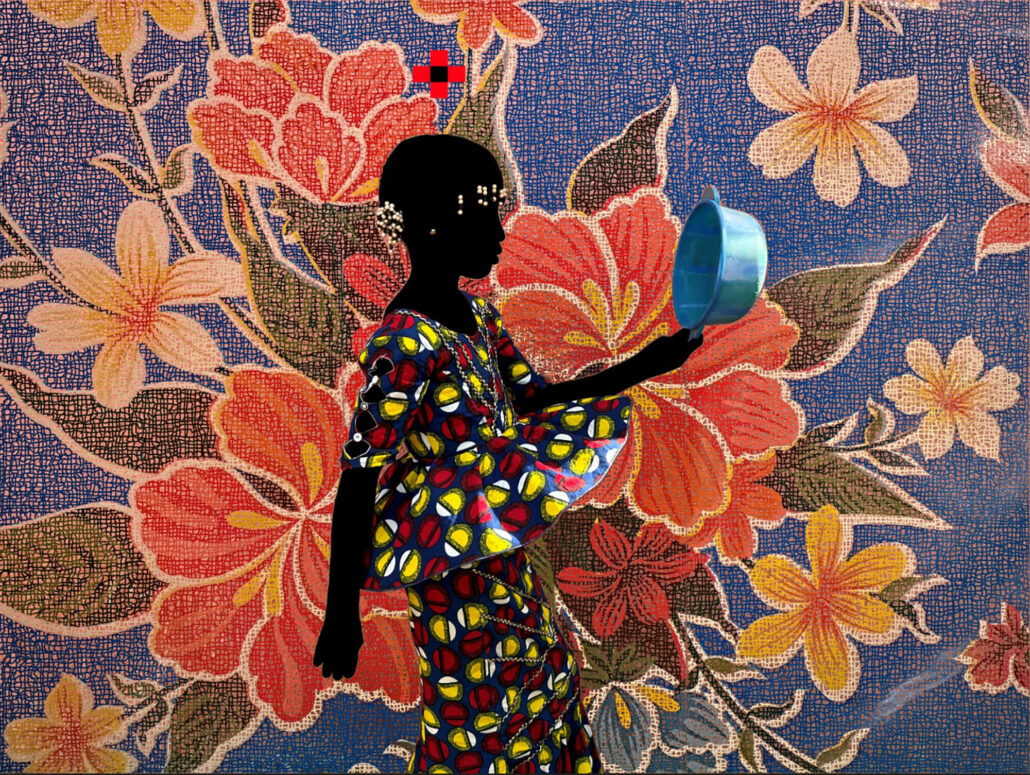
Saidou Dicko. Courtesy of the artist & ARTCO Gallery.
First opened in Aachen, Germany, in 2003, ARTCO Gallery has expanded its geographical repertoire to include a space in Berlin and Brussels, Germany. Run by Joachim and Simon Melchers, ARTCO presents a comprehensive portfolio of contemporary artists working across various creative practices – and always with a focus on the African continent, its diaspora, and its cultural and historical influence. The gallery participates in several international fairs, seeking to bring art from the continent to the broadest possible audience. In addition to its programme of solo shows and group exhibitions, ARTCO Gallery regularly published artist monographs and exhibition catalogues.
In the context of ARCOLisbo, the represented artists create an emotional relation to existential quests, identity struggles and collaborative solutions to our planetary problems. Building upon the gallery’s positioning, they point to topics in specific countries and aim to establish a primal connection to human nature beyond contemporary aesthetics.
Cecilia Lamptey-Botchway (1992, Ghana) is a mixed-media artist versed in figurative painting, performance and textile production. The artist’s practice encompasses ideas about gender roles and womanhood, crafting works and performances that comment on societal challenges she and many other women in West Africa still face. Recycled mopping wool fibres are glued onto the canvas and become a reference to labour that is still often addressed to women. ‚With this set of paintings, I capture how the contemporary Ghanaian women navigate the challenges of womanhood ‘, she explains.
Saidou Dicko (1976, Burkina Faso) applies thick black brushstrokes to paint photographs he took in his home country. Anonymising the subjects, he breaks down the concept of the individual, democratising his characters by removing key social indicators such as age, wealth and faith. Instead, he brings us closer to their intimate gestures, the role of childlike play, hard work, or complex family dynamics.
In a more playful approach, German-Ghanaian artist Selassie (born 1988) works with wide, physical and intuitive gestures to reconnect to his upbringing in Ghana. He identifies visual art (like his music) as an agent of culture mediating individual and collective memory. Growing up in Ghana as part of an Ewe family, the representative power of symbols, icons and stickmen play a significant role in his work. In harmony with nature, they are meant to create the missing link to universal wisdom that seems lost in our cultural circles.
Perve Galeria (Africa in Focus)
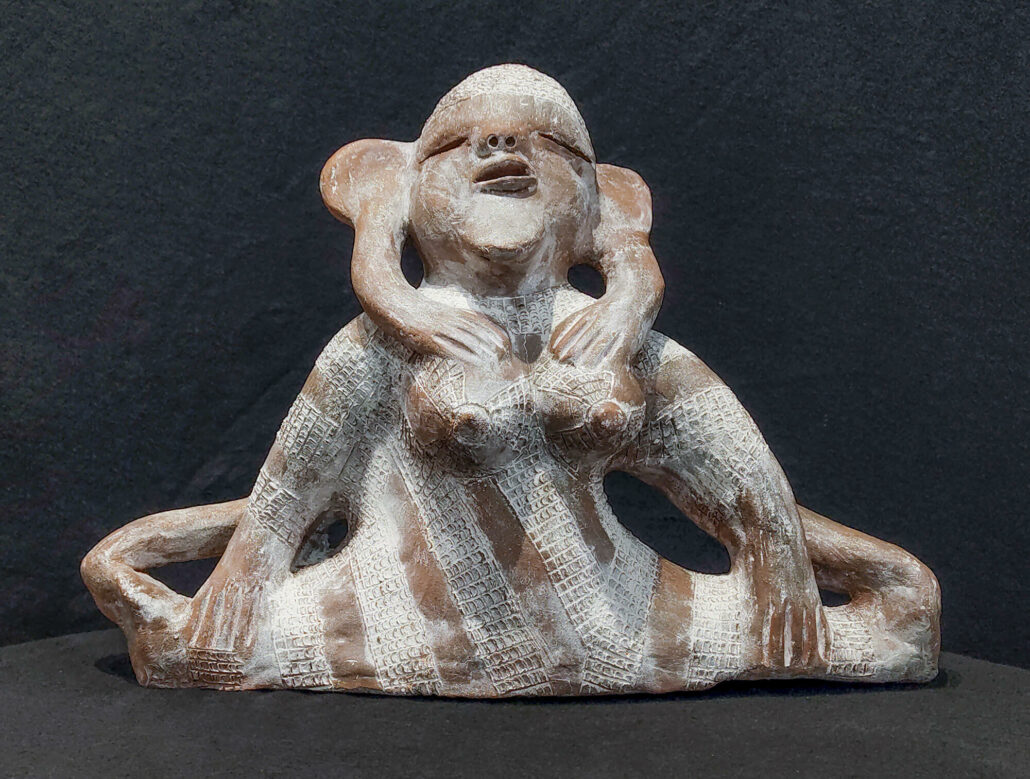
Reinata Sadimba, Untitled, 2021. Sculpture in Ceramic and limestone, 27 x 36 x 14cm. Courtesy of the artist and Perve Galeria.
Located in Lisbon since 2000, Perve Galeria presents modern and contemporary art exhibitions, incorporating authors from various backgrounds and artistic languages. Since the late 1990s, the “Lusophonies” Collection has been building, devoted to art from Portuguese-speaking countries, which aims to merge the gap between Africa, the Middle East, South America and Asia.
At ARCOlisboa’s Africa Focus section, Perve Galeria establishes a dialogue between the artworks of the Mozambican masters Reinata Sadimba (1945) and Teresa Roza d’Oliveira (1945-2019), with those of José Chambel, an artist working with photography as his primary media, born in 1969, in São Tomé and Príncipe.
Reinata Sadimba was born in the Makonde community, one of the most ancient ethnic groups in Africa. Following a unique path, she actively participated in Mozambique’s liberation struggle. After the independence of her country in 1975 and after losing six of her seven children due to the war and the lack of medical care, and also after having left her abusive husband, Reinata dedicated herself to figurative sculpture in terracotta, breaking free from the impositions of her ethnic group, which only allowed women to make utilitarian objects in ceramics, leaving the figurative work to men only.
Teresa Roza d’Oliveira, the luso-descendant artist born in Mozambique, was an important activist for her country’s independence. In the late 1970s, she divorced her husband to live in a homosexual relationship – perhaps the main reason her work was silenced, which Perve Galeria has been undoing since it started to represent her artistic estate in 2022. Her artworks express a longing for freedom, breaking free from societal misogyny and heteronormative constraints.
José Chambel’s photographic language captures the contemporary aspects of African traditions and rituals, reconfiguring them into his artistic expression. Under a socially and politically problematising lens, and while deeply rooted in his heritage, Chambel embodies a promising generation committed to encouraging the act of rethinking Africa’s image.
Sabrina Amrani

Mónica de Miranda, A fine line 4, 2022. Inkjet print and red cotton threads, 40 x 60cm. Edition ⅓ + 2AP. Courtesy of the artist and Sabrina Amrani.
Sabrina Amrani, The French-Algerian gallerist, opened the eponymous gallery in 2011, established in Madrid, with two spaces in the capital. The gallery’s international program highlights artists and practices that echo the contemporaries’ values and concerns linked to the Global South. For over a decade, the gallery has created bridges between the artists it represents, art professionals and the public, and collaborates with numerous institutions and international artistic events.
Alexandra Karakashian (b. 1988, Johannesburg) is a South African artist based in Cape Town, South Africa. Her work stems from her personal and family history and reflects on current issues of exile, migration and refugee status. Process and materiality are critical to her practice. Employing used engine oil and salt as a medium for painting, she engages in ecological discussion, the threatening instability and subtle collapse, and the unethical seizing of rapidly dwindling natural resources, particularly on the resource-rich African continent.
Mónica de Miranda is a Portuguese artist of Angolan origin who lives and works between Lisbon and Luanda. Filmmaker, artist and researcher, her work is based on themes of urban archaeology and affective geographies. She works in an interdisciplinary way with drawing, installation, photography, film, video and sound in its expanded forms and the boundaries between fiction and documentary.
Special Exhibition: ‘PARAGONE: What’s with mediums today?’ by THIS IS NOT A WHITE CUBE
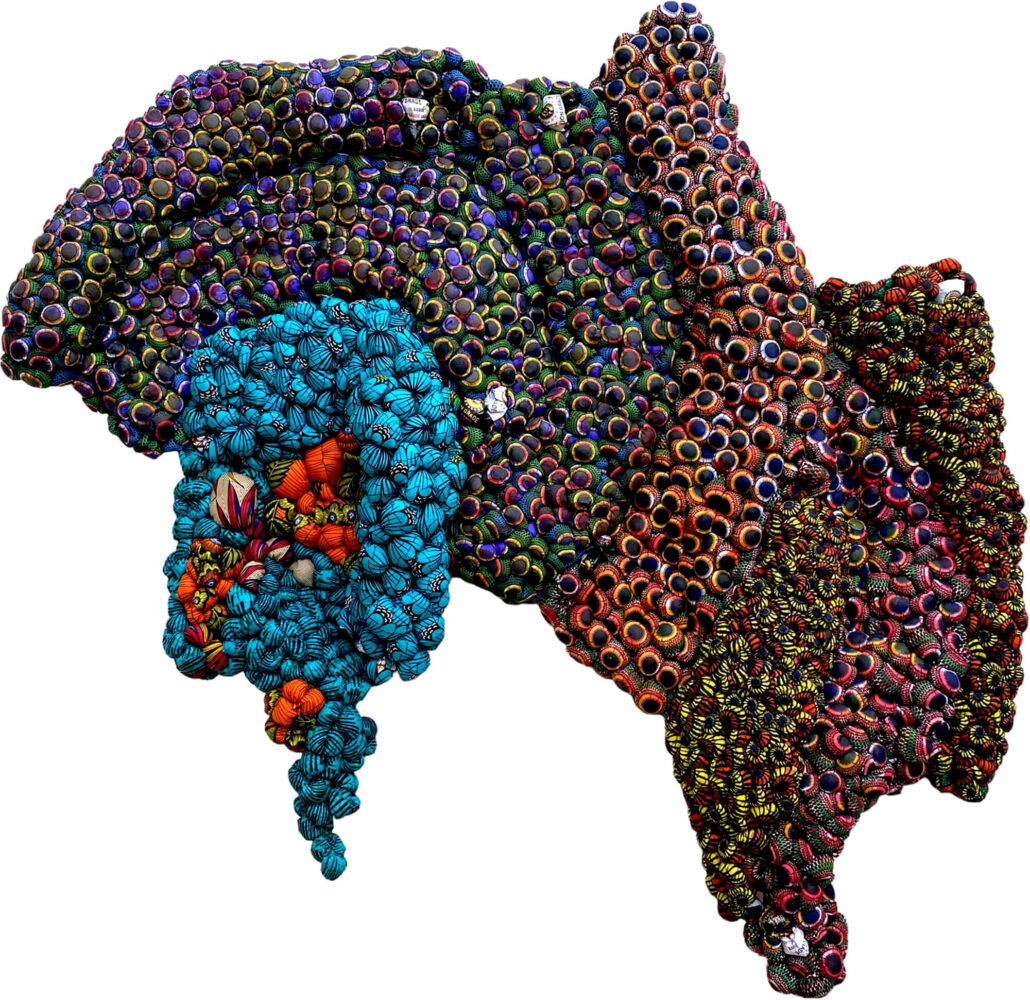
Samuel Nnorom, Linking Path. Courtesy of the artist and THIS IS NOT A WHITE CUBE
In the context of the Lisbon Art Week, the international contemporary art exhibition ‘PARAGONE: What’s with mediums today?’ will open on the 26th of May in three exhibition centres: Cape Verde Cultural Center; Water Museum – Barbadinhos Steam Pumping Station and Patriarchal Reservoir.
The ‘PARAGONE’ exhibition offers a guided tour program that promotes the rediscovery of three stages of historical heritage – unknown to many – linked to Lisbon’s water supply.
‘PARAGONE: What’s with mediums today?’ carefully reflects on the notion of “mediums” in current artistic practice. Through the renewal and explorative deconstruction of the ancestral debate over the hierarchical classification of artistic disciplines in the early modern era, the ‘PARAGONE’ art exhibition reveals how long-established boundaries between arts and crafts are now becoming eminently permeable.
Curated by Graça Rodrigues, Katherine Sirois, Sónia Ribeiro and Ricardo Barbosa Vicente, this exhibition comprises the third chapter of a broader curatorial project of the contemporary art gallery THIS IS NOT A WHITE CUBE, ongoing since 2019, focusing on concepts of materiality and immateriality in the field of contemporary art.
Reflecting on the question of the “medium” in contemporary art discourse, the exhibition explores current trends towards the construction of formal unities independent of the compartmentalising ideas concerning the purity of the medium. Such compartmentalisation has previously ensured the historical position of works as art. However, the new trends in this exhibition assert themselves either through experimentation with technical addition or through the recovery and integration of remote practices of artistic production. The exhibition showcases a renewed approach to representation in contemporary art. This approach questions the historical system of categorisation and hierarchisation for the arts, a system that seems increasingly out of step with the times, particularly with respect to canonical norms.
Thus, the ‘PARAGONE’ exhibition challenges traditional criteria and judgments of aesthetic quality, expressing the pronounced philosophical ambition to problematise artistic practices. Through its three-stage exhibition – Centro Cultural Cabo Verde, Barbadinhos Steam Pumping Station and Patriarchal Reservoir – ‘PARAGONE: What’s with mediums today?’ explores significant conjunction of media, highlighting works by artists from a wide variety of cultural milieus and geographical regions – including Algeria, South Africa, Angola, Brazil, Cape Verde, Mozambique, Nigeria, Portugal, Democratic Republic of the Congo, United Kingdom and São Tomé and Príncipe – whose creative practices cross spatial and technical boundaries.
For more information, please visit ARCOlisboa.
